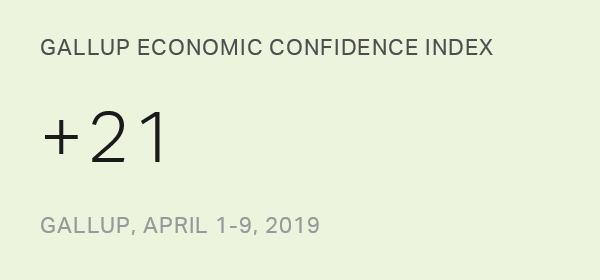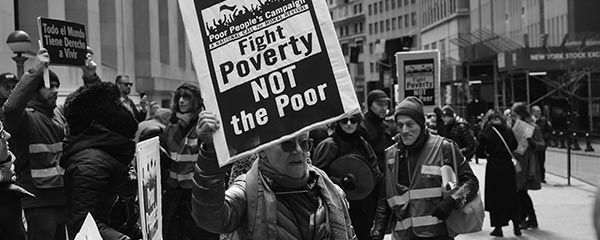Story Highlights
- Percentage spending more in recent months now 34%, up from 30% in 2018
- Still, only 13% say higher spending is their new normal
- Majority preference for saving over spending holds firm near 60%
WASHINGTON, D.C. -- Americans are more likely now than at any time in the past decade to report spending more money than usual in recent months.
While the majority continue to say they are spending the same amount (34%) or less than usual (32%), the 34% spending more is up from 30% a year ago and from 17% at this metric's lowest ebb in 2009 and 2010. During that recession and post-recession period, Americans' dominant response was that they were spending less, including a high reading of 57% in February 2010.

The same poll found Americans feeling relatively positive about their personal finances, both today and looking ahead.
These findings, from Gallup's April 1-9 poll, come as Commerce Department data show that U.S. consumer spending increased by 0.9% in March over the prior month -- the largest one-month jump in a decade. But this follows relatively tepid first-quarter growth, which had fueled concerns that a recession could be on the horizon. As a result, many economists are taking a wait-and-see attitude about consumer outlays.
Gallup first asked this question in April 2009, as consumer spending was in a rare period of decline. The stock market had just hit its low point of the Great Recession, and unemployment was near 9% and climbing toward its high point later that year.
At that time, 53% of Americans said they were spending less money than usual, while only 17% reported spending more. The percentage spending less rose to 57% the following year, before declining to the 40% range as the economic recovery picked up. This year marks the first time since the recession that the percentage saying they are spending less has not exceeded those spending more.
"Spending" Still Not Something to Celebrate
A follow-up question asks consumers who report a change in spending (either more or less than usual) to say whether this is a "new normal" for them or just temporary. The results suggest frugality is a virtue Americans aspire to, at least in how they present themselves to others.
As Gallup has seen each year, most of those who say they are spending less say it's their new normal, while most of those reporting higher spending say it's temporary.
-
Currently 23% of Americans, down from 38% in 2010, say they are spending less and it's their new normal.
-
Fewer Americans, 13%, say they are spending more and it's their new normal; however, this is up from 6% in 2009 and near the 14% high point recorded in 2011.
Recessionary Shock to Spending Preferences Persists in 2019
While U.S. consumers may be spending more freely in 2019, their spending mindset remains entrenched in 2009.
Asked whether they more enjoy spending or saving money, 61% of adults still opt for saving and 36% for spending. That is consistent with what Gallup has found each April since 2009. At the same time, it is a stark departure from 2001, 2005 and 2006, when savers barely outnumbered spenders.

Bottom Line
The percentage of Americans reporting that their recent spending is higher than usual has been inching up over the past few years as the percentage spending less has been inching down. This aligns with improved gross domestic product and government spending statistics across these same years. Still, spending growth is not nearly as high as occurred in the late 1990s, when it routinely surpassed 5%, and one reason could be the psychological resistance to spending that Americans acquired during the recession. That shows no signs of abating.
Given that consumer spending accounts for roughly two-thirds of U.S. GDP, Americans' reluctance to spend in the post-recession era may very well explain why economic growth has yet to reach levels seen in the 1980s and 1990s.
View complete question responses and trends.
Learn more about how the Gallup Poll Social Series works.




